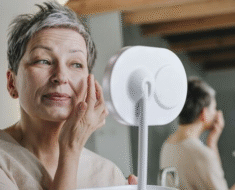Understanding Bumps and Lesions in the Genital Area: Possible Causes and When to Seek Medical Advice
There are a variety of reasons why bumps, lesions, or patches might appear in the genital area. Some are due to irritation or hygiene habits, while others may be linked to infections or chronic skin conditions. Below are the most common causes:

1. Folliculitis
Folliculitis is a common condition where hair follicles become inflamed, often after shaving, waxing, or wearing tight clothing that traps heat and sweat.
Appearance: Small red or white pimples that may feel sore, itchy, or warm to the touch, sometimes with pus inside.
What to do: Keep the area clean and dry. Avoid shaving or using harsh products until the area heals. Warm compresses may soothe irritation. If symptoms worsen or spread, consult a healthcare provider, as antibiotics might be necessary.
2. Sebaceous Cysts
Sebaceous or epidermoid cysts form when oil glands beneath the skin get blocked. These are generally harmless.
Appearance: Round, smooth bumps that move slightly under the skin. Usually painless, unless they become infected.
What to do: Most cysts resolve on their own. Avoid squeezing or popping them, as this can cause infection. If the cyst becomes swollen or painful, a doctor can drain it safely.
3. Ingrown Hairs
Ingrown hairs occur when a hair grows back into the skin, typically after shaving or waxing.
Appearance: Small, raised red bumps, sometimes with a visible hair trapped underneath.
What to do: Gently exfoliate the area and avoid further irritation. Warm compresses can help reduce inflammation.
Conditions That Require Medical Attention
Not all bumps or sores are harmless. Some may be signs of infections or other conditions that require medical evaluation and treatment.
Genital Warts
Genital warts are caused by certain strains of the human papillomavirus (HPV).
Appearance: Small, flesh-colored or pink growths, often in clusters resembling cauliflower. They are usually painless but may cause mild itching or irritation.
Why it matters: HPV is highly contagious through skin-to-skin contact, and some strains are linked to cervical and other cancers. Treatments include topical medications, cryotherapy (freezing), or minor surgical removal. Vaccination can help prevent most strains of HPV that cause warts and cancer.
Herpes Simplex Virus (HSV)
Genital herpes, caused by HSV-1 or HSV-2, is a viral infection that can recur periodically.
Appearance: Painful blisters or open sores that may crust over as they heal, often preceded by tingling, itching, or burning sensations.
Why it matters: While herpes is incurable, antiviral medications can help manage symptoms and reduce the risk of transmission. Early diagnosis helps control outbreaks and protects partners.
Molluscum Contagiosum
This viral skin infection spreads through direct contact, including sexual contact.
Appearance: Small, round, pearl-like bumps with a central dimple. Usually painless, though they may itch.
Why it matters: Molluscum contagiosum is not dangerous and often resolves on its own within months. However, treatment can speed up healing and prevent further spread.
Syphilis
Syphilis is a serious bacterial infection that progresses in stages.
Appearance: The first stage is a painless sore (chancre) that appears where the bacteria entered the body, often in the genital area.
Why it matters: If left untreated, syphilis can spread and cause significant damage to organs, nerves, and the brain. Early stages are treatable with antibiotics, so seeking medical help promptly is crucial.
Lichen Sclerosus and Lichen Planus
These chronic inflammatory skin disorders can affect the genital area.
Appearance: Lichen sclerosus causes white, thin, shiny patches, while lichen planus produces flat, purple bumps. Both conditions can cause itching, pain, or scarring over time.
Why it matters: These conditions require medical management with topical steroids or other treatments to reduce inflammation and prevent complications.
When to See a Doctor
It may feel uncomfortable to talk about genital health, but it’s important to see a healthcare provider for peace of mind and an accurate diagnosis. Make an appointment if you notice:
Bumps or sores that last more than two weeks.
Painful blisters, ulcers, or open wounds.
Unusual discharge, itching, or burning sensations.
Rapid changes in the size, shape, or color of a lesion.




